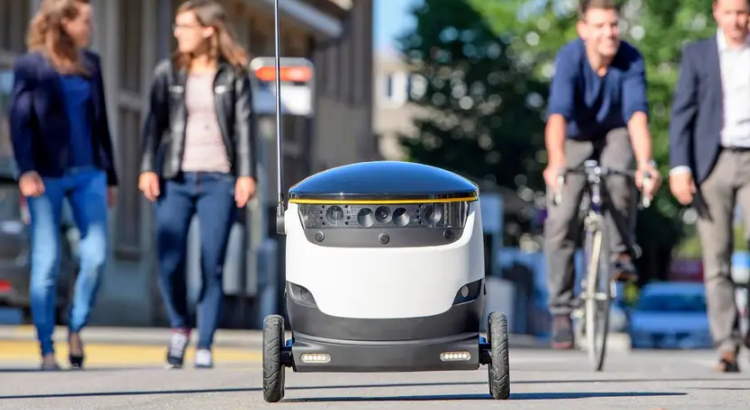The future is now and robots are beginning to get their rights, at least to our sidewalks. Pennsylvania the latest state to grant robots the right of way as a pedestrian.
- Pennsylvania the latest state to protect robot rights, autonomous delivery robots are now classified as pedestrians.
- Legal for robots to share the sidewalks and streets with people in 12+ states in the US.
Delivery drones, also known as robots, now have specific legal rights in Pennsylvania. According to Pennsylvania Senate Bill 1199 (SB 1199), Personal Delivery Devices (PDDs) merit official recognition. Eleven other states also recognize PDDs as legally permitted delivery options for consumers and businesses. Wisconsin, Idaho, Florida, Washington, D.C., and Virginia belong to the elite group of states applauding delivery drones and their services.
Human pedestrians need to understand that these PDDs are recognized as though they are similar pedestrians with robot rights to travel freely on sidewalks and roadways. In other words, the state of Pennsylvania values delivery devices. One thing to note is that monitors observe the PDDs 24 hours a day, seven days per week. Thanks to GPS technology, delivery robots are equipped to find their destinations. Plus, the drones can handle curbs and other obstacles.
Although some people may find it unacceptable to share sidewalks with robots, Pennsylvania lawmakers think otherwise. In Pennsylvania, there is now no distinction between a human pedestrian and a delivery drone. Furthermore, it is essential to remember that the law protects delivery drones. Technically speaking, human pedestrians dare not complain about sharing sidewalk space with delivery devices possessing robot rights. In legal terms, Personal Delivery Devices merit value when numerous consumers shop for groceries, clothes and other items via online vendors.
In Pennsylvania, Personal Delivery Devices can travel up to 12 mph on sidewalks and 25 mph on roadways. Also, the robots can carry up to 550 pounds. Astounding speed limits may worry some human pedestrians and bicycle riders because the robots can travel much faster. Accordingly, it is only natural for officials to foster fears about possible collisions.
One obvious problem is that delivery robots do not have arms and hands. Practicality suggests that they are unable to open gates and doors. Consequently, a delivery free from personal contact means that the robot will need to place items outside a person’s entrance instead of on their porch or patio. An inability to lift a latch may present additional problems to consumers who do not want their purchases left in the open where any passerby can steal their packages.
Another possible issue involves the permissible weight of 550 pounds that can easily knock a person flat on their feet. Accordingly, Pennsylvania-based businesses operating Personal Delivery Devices must have liability insurance for potential personal injury lawsuits. Another problem involves the act of sharing space on a crowded and narrow sidewalk. Many sidewalks are barely wide enough for two people. So, a robot traveling at high speeds may cause a human pedestrian to have an anxiety attack.
Another issue involves the idea that robots with robot rights may eventually replace independent human delivery contractors and employees. Many human delivery workers need to deliver products if they want to pay their rent or mortgages. On the other hand, delivery drones may provide essential benefits to society, including the options for avoiding human contact with people who may carry the COVID-19 virus or variants.
Consider the option that Personal Delivery Devices automatically allow for less traffic congestion. An expanded fleet consisting of Personal Delivery Devices means fewer human delivery drivers are rushing to reach their destinations on time. While these drones bear no resemblance to science fiction robots, their future effectiveness at delivering food, toilet paper and prescription medicines may outweigh any natural fears harbored by consumers.
Pennsylvania, along with the other 11 states permitting delivery drones, embraces future possibilities despite possible adverse reactions. Only time will tell if sharing a sidewalk or roadway with a robot offers a positive solution for less vehicle congestion and greater efficacy in delivering needed items. It is easy to recognize the cons, but people may need to consider the pros.
Delivery drones may make things easier on professional carriers who already strive to meet their online shoppers’ demands. Rural and remote areas may not have enough human drivers to deliver their items. Larger cities may have shopping demands that are difficult to meet. Delivery robots may offer the perfect solution to a perplexing problem in modern American society.
One thing is for sure, with increased positive legislation for robots, we are getting closer to having personal robots who can legally navigate the world around us.
